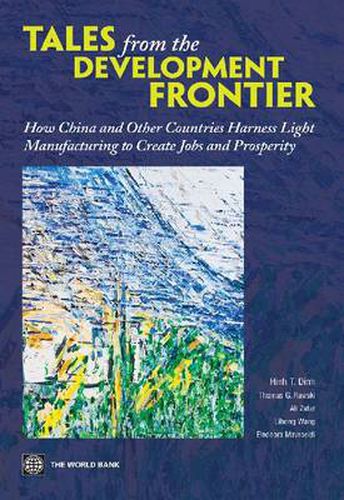Readings Newsletter
Become a Readings Member to make your shopping experience even easier.
Sign in or sign up for free!
You’re not far away from qualifying for FREE standard shipping within Australia
You’ve qualified for FREE standard shipping within Australia
The cart is loading…






Despite widespread agreement among economists that labour-intensive manufacturing has contributed mightily to rapid development in China and other fast-growing economies, most developing countries have had little success in raising the share of manufacturing in production, employment, or exports. Tales from the Development Frontier recounts efforts to establish light manufacturing clusters in several Asian and African countries, looking in particular at China.
A companion volume to Light Manufacturing in Africa-which laid out a strategy for injecting new industrial growth nodes into African economies-Tales from the Development Frontier focuses on the six main binding constraints to competitiveness that nascent light manufacturing industries must overcome in developing countries: the availability, cost, and quality of inputs; access to industrial land; access to finance; trade logistics; entrepreneurial capabilities, both technical and managerial; and worker skills. The volume systematically explores potential growth opportunities in light manufacturing in a carefully selected subset of industries: agribusiness, apparel, leather goods, wood-working, and metal products. It specifies the constraints that need to be addressed before local and international entrepreneurs can take advantage of the latent comparative advantage available to many low-income economies in the target industries. It also proposes policies to ease the constraints-policies that can open the door to rapid increases in industrial output, employment, productivity, and exports. The outcomes described in this volume include both inspiring successes and miserable failures in addressing the binding constraints in the identified sectors. These examples reveal how and why industrial development efforts in poor countries-where, by definition, underlying conditions are far from ideal-can accelerate growth. Most of the firms described in a series of case studies started from a very simple and modest base in an environment full of seemingly insurmountable obstacles.
With its rich array of new material, this book will support the ongoing research of policy analysts focused on China and other developing countries. Above all, the volume aims to embolden business entrepreneurs and government officials in low-income countries to pursue newly emerging opportunities to expand and accelerate the growth of light manufacturing in their home economies.
$9.00 standard shipping within Australia
FREE standard shipping within Australia for orders over $100.00
Express & International shipping calculated at checkout
Despite widespread agreement among economists that labour-intensive manufacturing has contributed mightily to rapid development in China and other fast-growing economies, most developing countries have had little success in raising the share of manufacturing in production, employment, or exports. Tales from the Development Frontier recounts efforts to establish light manufacturing clusters in several Asian and African countries, looking in particular at China.
A companion volume to Light Manufacturing in Africa-which laid out a strategy for injecting new industrial growth nodes into African economies-Tales from the Development Frontier focuses on the six main binding constraints to competitiveness that nascent light manufacturing industries must overcome in developing countries: the availability, cost, and quality of inputs; access to industrial land; access to finance; trade logistics; entrepreneurial capabilities, both technical and managerial; and worker skills. The volume systematically explores potential growth opportunities in light manufacturing in a carefully selected subset of industries: agribusiness, apparel, leather goods, wood-working, and metal products. It specifies the constraints that need to be addressed before local and international entrepreneurs can take advantage of the latent comparative advantage available to many low-income economies in the target industries. It also proposes policies to ease the constraints-policies that can open the door to rapid increases in industrial output, employment, productivity, and exports. The outcomes described in this volume include both inspiring successes and miserable failures in addressing the binding constraints in the identified sectors. These examples reveal how and why industrial development efforts in poor countries-where, by definition, underlying conditions are far from ideal-can accelerate growth. Most of the firms described in a series of case studies started from a very simple and modest base in an environment full of seemingly insurmountable obstacles.
With its rich array of new material, this book will support the ongoing research of policy analysts focused on China and other developing countries. Above all, the volume aims to embolden business entrepreneurs and government officials in low-income countries to pursue newly emerging opportunities to expand and accelerate the growth of light manufacturing in their home economies.